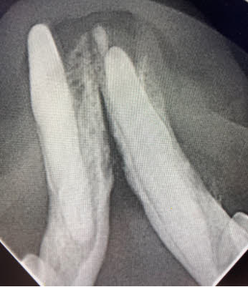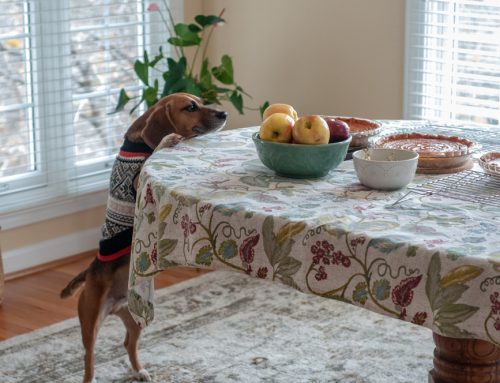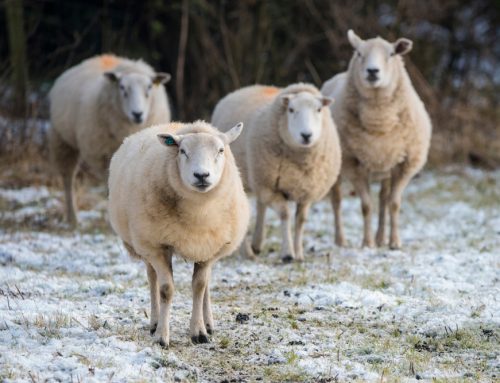
Tooth fractured below the gum line.
About a year ago our hospital began taking dental radiographs. So some folks ask me, Why do this in our pets? Even with bad teeth they don’t act like their mouths hurt? It just adds to the overall cost of the dental doesn’t it?
All of these are great questions.
Why do we need to do full mouth radiographs on all of our pets? First, every year when I go to my dentist he takes radiographs of my teeth. He doesn’t say that it’s an option, he just does it and that how he finds problems. We can now do the same with our pets. The photos at the top are just 2 examples of bad things that we can find with radiographs that we would be missing if we just cleaned the teeth. Tooth fractures below the gums and tooth root abscesses can both cause pain, yet without radiographs we would have missed both of these problems. The American Veterinary Dental College states, “Dental radiographs are one of the most important diagnostic tools available to a veterinary dentist. They allow the internal anatomy of the teeth, the roots and the bone that surrounds the roots to be examined.”
Even with bad teeth, some pets don’t act like their mouths hurt. Yes, I see this all the time, Fido has teeth falling out of his mouth and yet he continues to eat and drink. This is a testament to the survival instinct of animals. In the wild the weak did not survive, to show pain and weakness often meant certain death. That trait has been carried down to our domestic fur babies. But I can tell you that without fail, owners notice after the fact that their pet is feeling better. I cannot tell you how many times I have heard, “Boy, I did not think he was feeling bad but he acts like a puppy now!”
Now about cost, yes it does increase the cost but overall the cost of the procedure is minimal compared to the benefit. Without radiographs the problem will remain to fester and Fido might need to come back in 2-3 months for another anesthesia and another dental procedure. Now the cost for this second procedure is way more than the cost of the original radiographs and extractions.
Full-mouth radiographs also establish a base-line for future comparison.
This image of an unerupted K-9 tooth was taken of an 11 year old dog–Max. If the problem had been found as a puppy the reason for the problem could have been corrected and the tooth could have come in normally. By the time and age when we found this, there was nothing we could do. Max was lucky this tooth did not abscess or form a cyst which could have eaten away at his jaw.

Unerupted Lower K-9 tooth in small dog
This is my first time at posting a blog, I appreciate feedback good and bad. I look forward to posting more in the future.






Leave A Comment